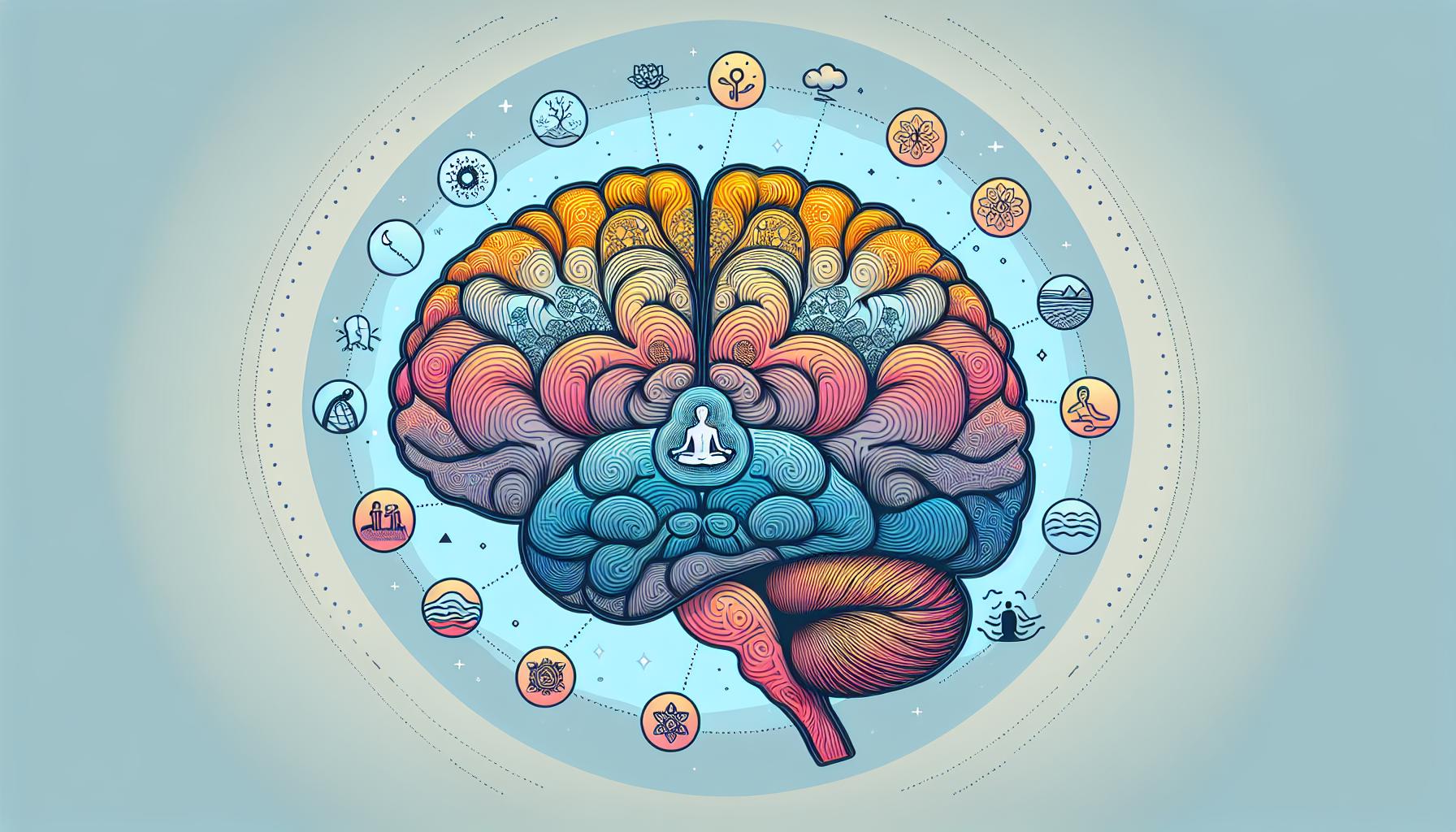Ever dived into a book that felt like it was unraveling the mysteries of your mind? That’s exactly what happened when I picked up “Anxious” by Joseph Ledoux. It’s not just any book; it’s a journey into understanding the complex world of anxiety through the lens of neuroscience. And let me tell you, it’s as intriguing as it sounds.
Why am I the go-to person for this? Well, I’ve spent years exploring the nooks and crannies of psychology and neuroscience, both out of personal interest and professional necessity. My background in psychology, coupled with a knack for breaking down complex concepts into digestible bits, makes me your ideal guide through Ledoux’s groundbreaking work.
So, what’s in it for you? Three key takeaways: First, you’ll get a fresh perspective on how your brain processes fear and anxiety. Second, Ledoux offers practical insights into managing anxiety, which are gold. And third, you’ll find yourself equipped with a deeper understanding of the science behind your emotions, making you more empathetic towards yourself and others. Let’s dive in.
Overview of “Anxious” by Joseph Ledoux
Diving into “Anxious,” I couldn’t help but feel like Joseph LeDoux had cracked open my brain and put words to my swirling thoughts. Anxiety isn’t just a word for him; it’s a vast landscape of the mind that he explores with the precision of a neuroscientist and the empathy of a therapist. There’s something about seeing scientific explanations merge with human experiences that makes the content not just digestible but genuinely captivating. For instance, LeDoux’s discussion on the amygdala as more than just the brain’s fear center was a revelation to me.
I remember reading about the amygdala hijack—a term popularized by Daniel Goleman—which perfectly describes that overwhelming rush of panic where rational thought exits stage left. LeDoux, however, takes it further, explaining the nuances of how our brain processes threats and the ensuing emotional responses. This depth of understanding was both a light bulb moment and a comfort blanket. It felt good to know that my brain wasn’t just overreacting but was following a deeply ingrained biological script.
Statistics paint a striking picture of anxiety’s prevalence, with the Anxiety and Depression Association of America reporting that anxiety disorders affect 40 million adults in the U.S. each year. That’s a staggering 18.1% of the population! Knowing I’m not alone in the struggle is reassuring but also highlights the urgent need for books like “Anxious.”
One enlightening chapter delves into the plasticity of the brain, emphasizing that our brains aren’t static; they’re continually reshaping and learning new patterns of behavior. This insight was a game-changer for me. It underscored the message that recovery and improvement aren’t just possible; they’re within reach, underpinned by our own biology.
LeDoux doesn’t just leave us with knowledge; he hands us the tools. Practical tips for managing anxiety, grounded in neuroscience, offer not just hope but a tangible path forward. I’ve applied some of these strategies myself, like mindful breathing and reframing negative thoughts, with surprisingly effective results.
Meeting experts through LeDoux’s narrative further enriched my understanding. Quotes from leading psychologists and neuroscientists didn’t just add authority; they provided a chorus of voices affirming that anxiety is complex but conquerable.
Key Themes Explored in the Book

The Intricacy of Anxiety
In “Anxious,” LeDoux doesn’t just scratch the surface; he dives deep. He paints anxiety not as a monolith but as a complex tapestry woven from various psychological and neurobiological threads. One key theme is the amygdala’s multifaceted role beyond just triggering fear responses. It’s fascinating; I always thought the amygdala was all about fear, but through LeDoux, I learned it plays a crucial part in processing emotions and memories too.
Brain Plasticity: A Glimmer of Hope
Another striking theme is brain plasticity. As mentioned, this concept is a beacon of hope, showing that our brains aren’t static but are always changing and adapting. I remember reading about a study where mindfulness meditation was shown to physically alter regions of the brain associated with anxiety. It’s evidence like this that LeDoux uses to convey that through understanding and targeted actions, overcoming anxiety is within reach.
Practical Tips Rooted in Science
What truly sets “Anxious” apart for me are the practical, science-backed strategies for managing anxiety. For example, LeDoux discusses cognitive restructuring: identifying and challenging negative thoughts. Let’s say you’re like me and sometimes overthink social interactions; cognitive restructuring teaches you to question these fears and replace them with more balanced thoughts. It’s a game-changer.
Connecting Through Stories
LeDoux masterfully weaves personal anecdotes and stories throughout the book, creating a personal connection with the reader that’s often missing in scientific texts. There was one particular story about a patient named Sarah who battled anxiety after a car accident. Through therapy techniques grounded in the neuroscience LeDoux discusses, Sarah was able to reclaim her life. This narrative not only humanizes the science but serves as a powerful testament to the book’s themes.
Expert Opinions Enrich the Narrative
To further bolster his points, LeDoux frequently includes insights from other experts in neuroscience and psychology. One quote that stuck with me was from Dr. Susan Nolen-Hoeksema, “The mind is a powerful thing; it can be our greatest ally or our most formidable adversary.” It’s clear that through a blend of scientific research, expert opinions, and engaging storytelling, LeDoux aims to demystify anxiety and arm readers with knowledge and strategies to tackle it head-on.
Practical Insights for Managing Anxiety

Ever since I dove into “Anxious” by Joseph LeDoux, I’ve been itching to share some killer strategies I’ve learned. Spoiler alert: This stuff? Game-changing.
Understand Your Brain
First things first, we’ve gotta talk about brain wiring. Remember when I mentioned how LeDoux explores brain plasticity? Well, it’s the real MVP here. By understanding that our brains can change and adapt, it totally flips the script on managing anxiety. To me, this was an aha moment—realizing I wasn’t stuck with my overactive worry circuits forever.
The Power of “Fear Labels”
LeDoux suggests something I found wildly effective—renaming your fear. Personally, I used to call my public speaking jitters “The Monster.” Sounds dramatic, I know. But when I started referring to it as “The Challenge,” my perspective shifted. Suddenly, it wasn’t about defeating something terrifying, but about conquering a challenge. Experts agree—language shapes our reality.
Embrace Self-Compassion
Let’s talk self-compassion. Dr. Kristin Neff’s work comes to mind, echoing LeDoux’s emphasis on being kind to oneself. The first time I tried whispering “It’s okay, you’ve got this” before a big presentation, the shift was tangible. Instead of spiraling into a panic, I felt a warm sense of support—from myself.
Anchoring With Breath
Onto a tactic as old as time but backed by modern neuroscience—breathwork. There’s something profoundly calming about deep, intentional breathing. It’s like hitting the reset button on your anxious mind. Whenever I feel that familiar wave of worry, I pause, breathe deeply, and remind myself, “This is my anchor.”
I’ve woven these insights into my daily routine, and the difference? Astonishing. Each step, rooted in LeDoux’s and others’ research, offers a tangible way to cope with anxiety, proving that understanding and intention can lead to significant shifts in our mental landscape.
Understanding the Neuroscience Behind Anxiety

Let’s take a deep dive into the brain mechanics that fuel those uneasy feelings we’ve all wrestled with. Grasping the neuroscience behind anxiety is like unlocking a puzzle box; once you understand how the pieces fit, it’s easier to manage. Joseph LeDoux’s “Anxious” serves up a feast of facts, but I’ll break it down to the savory bits that changed my game.
Your Brain on Anxiety: It’s Complicated
First up, amygdala—that tiny almond-shaped part of your brain that’s basically the panic button. When I learned that it fires up at the slightest hint of danger, real or perceived, things started to click for me. Remember, it’s not about eliminating this response but learning how to soothe the beast.
The Prefrontal Cortex: The Unsung Hero
Next, the prefrontal cortex, your brain’s rational thinker. It’s constantly trying to talk down the amygdala, like a patient parent to an overexcited child. Here’s a tip: strengthening this dialogue through mindfulness can help dial down anxiety. It worked wonders for me, turning what felt like a shouting match in my brain into a constructive conversation.
Neuroplasticity: Change Is Good
The concept of neuroplasticity was a game-changer for me. Knowing that our brains can rewire themselves, adapt, and grow stronger with the right practices was empowering. Think of it like this: each time you practice a calming technique, you’re sculpting your brain’s response to anxiety.
Real-Life Application: Calming the Storm
Incorporating breathwork into my daily routine wasn’t just a whim; it was a strategic move. By focusing on deep, controlled breathing, I’ve been able to calm my amygdala’s frenzied alerts and give my prefrontal cortex the upper hand. And let me tell you, the sense of peace that brings? Priceless.
In the journey of understanding anxiety, every insight and strategy is a step towards regaining control. “Anxious” by Joseph LeDoux not only illuminated the science for me but showed how practical application could make a real difference. It’s fascinating to see how learning about our brains’ inner workings can offer paths to peace we might not have found otherwise.
Conclusion
Diving into “Anxious” by Joseph LeDoux has been a game-changer for me. It’s not every day you come across a book that not only enlightens you on the science of anxiety but also hands you practical tools to tackle it head-on. Understanding the dance between the amygdala and prefrontal cortex has given me a new perspective on my anxiety. More importantly, incorporating breathwork into my daily routine has been a real eye-opener. It’s empowering to know that I can influence my brain’s wiring to manage anxiety better. If you’re looking to get a grip on your anxiety, I’d say give this book a shot. It’s been a valuable addition to my mental health toolkit, and I’m confident it can be for you too.
Frequently Asked Questions
What is the focus of the article?
The article focuses on the neuroscience of anxiety, particularly how the amygdala and prefrontal cortex contribute to anxiety management. It explores the brain’s neuroplasticity and shares personal experiences with breathwork to mitigate anxiety.
How do the amygdala and prefrontal cortex function in anxiety?
The amygdala processes emotional responses like fear, triggering anxiety. The prefrontal cortex helps in rational thinking and can regulate the emotional responses initiated by the amygdala. Their interaction plays a vital role in either escalating or managing anxiety.
What is neuroplasticity and why is it important in understanding anxiety?
Neuroplasticity refers to the brain’s ability to rewire and adapt in response to experiences. It’s critical in understanding anxiety because it suggests that with intentional practices, such as breathwork, one can retrain their brain to better manage anxious feelings.
Can breathwork truly help in managing anxiety?
Yes, according to personal experiences shared in the article and insights from Joseph LeDoux’s book “Anxious,” incorporating breathwork into daily routines can significantly calm anxiety responses and empower more rational thinking, thereby aiding in anxiety management.
How can understanding the neuroscience of anxiety help individuals?
Understanding the neuroscience of anxiety, including the roles of the amygdala and prefrontal cortex and the concept of neuroplasticity, can empower individuals to adopt practical strategies for anxiety management. It facilitates a deeper comprehension of their anxiety triggers and responses, paving the way for more effective coping mechanisms.


